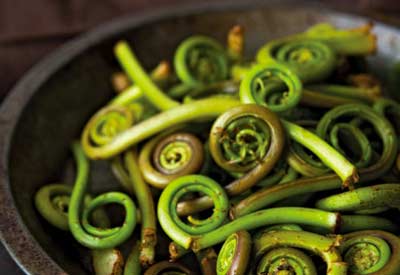Foraging for wild foods can be an enriching and sustainable way to connect with nature while sourcing fresh, free ingredients. However, identifying edible and poisonous plants is a crucial skill every forager must develop. Many edible plants have toxic lookalikes, and consuming the wrong one can have severe consequences. In this guide, we’ll explore tips for safely identifying plants and outline important methods to differentiate between edible and poisonous varieties.
Importance of Proper Plant Identification
When foraging wild foods, accurate identification is essential to avoid harmful mistakes. Even experienced foragers can sometimes encounter plants they aren’t familiar with, so it’s crucial to double-check before consuming anything. Using a reliable guidebook or app and learning from knowledgeable foragers can significantly reduce the risk of accidentally consuming a poisonous plant.
General Rules for Identifying Edible Plants
While there are no universal rules for identifying all edible plants, these guidelines can help narrow down your choices and avoid obvious dangers:
1. Know the Season
Plants have specific growing seasons, and foraging in the right time of year can help you find particular species. Understanding which plants are edible during each season will allow you to better identify them.
2. Observe the Plant’s Habitat
Certain plants thrive in specific environments. For example, wild garlic and nettles prefer shaded, moist woodlands, while purslane is often found in sunny areas. Knowing the typical habitat of edible plants can increase your chances of correctly identifying them.
3. Examine Leaves and Flowers
A plant’s leaves, flowers, and stems provide key clues to its identity. Look at the shape, size, and texture of the leaves. Check the flowers for their color and arrangement. For instance, dandelions have bright yellow flowers and jagged leaves, making them easy to identify.
4. Smell and Taste
Edible plants often have a distinct smell or taste. For example, wild garlic smells strongly of garlic, making it easy to differentiate from toxic plants. However, never eat anything unless you’re 100% sure it’s safe. Instead, rely on smell as a preliminary indicator.
Common Edible Plants and Their Lookalikes
Many wild edible plants have poisonous doppelgängers. Here are a few common examples and tips on how to tell them apart:
1. Wild Garlic vs. Lily of the Valley
Wild garlic (Allium ursinum) is easily identifiable by its garlic-like smell. However, it closely resembles the highly toxic lily of the valley (Convallaria majalis). The key difference is that wild garlic grows in clusters and has broad, soft leaves, whereas lily of the valley has stiffer, shinier leaves and does not smell of garlic.
2. Elderberries vs. Poison Hemlock
Elderberries (Sambucus nigra) are small, dark purple berries that grow in clusters. They have medicinal and culinary uses but must be cooked before consumption. Poison hemlock (Conium maculatum), which is deadly, also has clusters of small white flowers but lacks berries. Hemlock stems are often spotted, which can help distinguish them.
3. Chanterelle Mushrooms vs. False Chanterelles
Chanterelle mushrooms (Cantharellus cibarius) are prized for their golden color and delicate flavor, but they have a toxic lookalike known as the false chanterelle (Hygrophoropsis aurantiaca). True chanterelles have forked gills and a fruity smell, while false chanterelles have darker gills and a more typical mushroom scent.
Signs of Poisonous Plants
There are several common traits that many poisonous plants share. While these aren’t foolproof indicators, they should act as warnings to proceed with caution:
- Milky Sap: Plants with white or milky sap, such as poison hemlock, are often toxic.
- Umbrella-like Flower Clusters: Several poisonous plants, including water hemlock and poison hemlock, have umbrella-shaped flower clusters. Be particularly cautious around plants that look like these.
- Shiny Leaves: Plants like poison ivy and poison oak have shiny, oily leaves that can cause skin irritation or more severe reactions if consumed.
- Bitter or Soapy Taste: If a plant has an unpleasant taste, spit it out immediately. Many poisonous plants taste bitter or soapy.
The Universal Edibility Test
If you find yourself in a survival situation and need to identify a plant with no guide available, you can use the Universal Edibility Test. This involves testing the plant on your skin, lips, and mouth over several hours to check for adverse reactions before swallowing. However, this test should only be used in emergencies, as it takes time and comes with risks.
Foraging Safely
To ensure a successful and safe foraging experience, always follow these essential safety tips:
- Consult a Guide: Use a reliable foraging guidebook or app to help with identification. Websites like foraging wild foods offer valuable information on safe foraging practices.
- Stay Away from Polluted Areas: Avoid foraging near busy roads, industrial sites, or anywhere pesticides may have been used. Pollutants can be absorbed by plants, making them unsafe to eat.
- Harvest Sustainably: Take only what you need and leave enough for nature to replenish. Overharvesting can harm local ecosystems and wildlife.
Conclusion
Foraging wild foods is an exciting and rewarding activity, but safety must always be the top priority. Proper identification skills, awareness of poisonous plants, and safe harvesting techniques will ensure that you can enjoy nature’s bounty without any risks. Whether you’re an experienced forager or a beginner, always remember to be cautious, use resources to confirm plant identities, and appreciate the rich flavors that wild foods can bring to your table.

